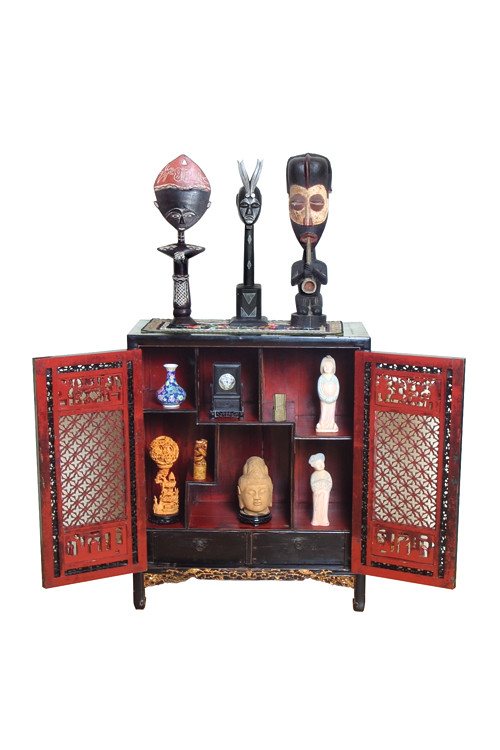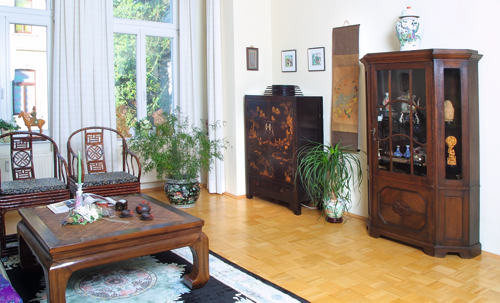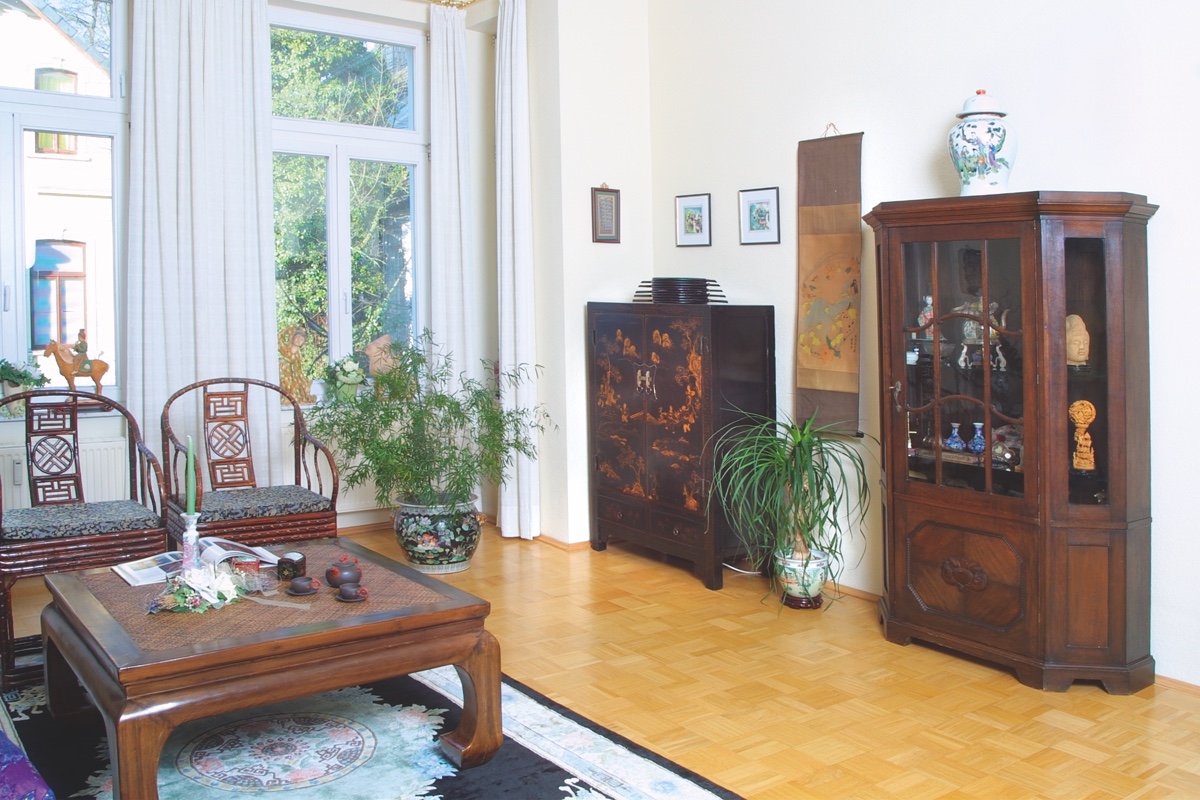Living in Chinese Style
Chinese furniture has a long history. The earliest piece of furniture was found in a tomb from the late Warring States Period (战国时期 475-221 BC). Back then people knelt on mats, so the furniture was low to cater to a lifestyle in which people ate, slept and worked on the ground. By the sixth century, high chairs and tables appeared, and during the Song Dynasty (宋朝 960-1279) you could find a multitude of all-purposes furniture pieces. But the real golden era of Chinese furniture making was the Ming Dynasty (明朝 1368-1644). Design and craftsmanship reached new heights, and the typical Ming style with its simple, smooth running intricate lines and elegant ornamentation is still very popular today. Unfortunately, genuine Ming furniture is very rare and hard to come by. Then, during the Qing Dynasty (秦朝 1644-1911), a new style evolved that was characterised by increased sizes and plump and heavy feel. Throughout the reign of the Qianlong (乾隆) Emperor (1736-1795), ornate carving and rich designs and decorations became popular.
A piece of furniture that was very popular during the Ming Dynasty is the kang (炕) table. The kang table pictured here is a low table made from elm wood, and it is more than a hundred years old. The top is tightly woven rattan in a wood frame. The bulging legs end in horse-hoof feet. Europeans often call it an opium table, but it was made for a ‘kang’, a brick platform that was heated from below by hot air from nearby stoves. Kangs are especially found in northern China where the winters can be very cold. The two armchairs with horseshoe shaped armrests are made from bamboo. They were produced in the last period of the Qing Dynasty.

Display cabinets were popular in all dynasties, and they were widely used to showcase antiques and rare items. This small cabinet in the picture from the Qianlong period was manufactured in the Guangdong province. It is very unique and it was made for a government official who collected small treasures. The cabinet is made from camphor wood and is lacquered in black and red and adorned with gold. The doors of open lattice work remind us of Chinese aniseed. This design has been well known since the beginning of the 12th century. The doors have wonderful carved panels at the top which depict the scenes of a Chinese story with each door hinge etched with a poetic verse. The first says: by washing the ink stone, the fish drinks ink. The opposite hinge says: when boiling tea, the crane flies away from the fire. The next line tells us that flowers and trees prosper in spring time. And the last verse informs us that the ghost of the zither and the book is everlasting. The artisan made this cabinet for a man who admired culture, literature and music, and it is highly likely that this man lived in the countryside.
Today, real antique furniture is becoming very rare in China. There is still some furniture from the Qing period on the market, but it is very hard to find genuine Ming furniture. One of the reasons for that is that the Chinese Cultural Relics Bureau has strict rules: any item produced before 1949 is considered a cultural relic which cannot be taken out of the country without government permission and a red wax seal. Furniture made before 1797 cannot be removed from China at all. As a result, all across China, especially in the south, near Hong Kong (香港) and Macau (澳门) , ‘Antique Markets’ are emerging. Most of the items offered at these markets are reproductions of older pieces, and for many people that is just fine. They do not care about the age and history of their item; it is the style that matters. The true collector, on the other hand, wants original pieces and is willing to pay almost any price for them. To them, owning an original piece is a glimpse into Chinese history.

By Gerlinde Pehlken

 Share on Facebook
Share on Facebook Share on Twitter
Share on Twitter Share on LinkedIn
Share on LinkedIn